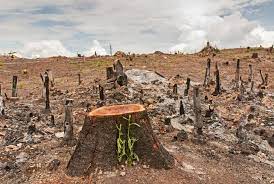What is Water Quality Monitoring?
Water quality monitoring involves the assessment, of the characteristics of a water body relative to set standards. This gives information on the adequacy of such bodies of water to serve designated purposes. Water quality monitoring programs are carried out to meet certain pre-determined objectives.
Monitoring involves the regular watch of the environment. It is the process of assessing the chemical, physical and biological characteristics of water. We also discussed the problems associated with water quality monitoring.
Definition of Water Quality Monitoring
Water quality monitoring is the practice of assessing the chemical, physical, and biological characteristics of water in streams, lakes, estuaries, and coastal waters and groundwater relative to set standards and providing information on whether these waters are adequate for specific uses such as drinking, swimming, irrigation, and ecosystem services.
Objectives for water quality monitoring
The objectives of water quality monitoring include:
• Identifying specific water quality problems that affect the health of humans and ecosystems.
• Determining long-term trends in water quality.
• Documenting effects of pollution prevention or remediation.
• Providing evidence for regulation compliance and legal disputes.
Read Also: What is Physical Habitat and Biological Assessments?
Monitoring Systems
Monitoring programs collect data from chemical, and biological analyses of water samples or field equipment. The design of an operational and adequate monitoring system must;
1. Take account of the required additional management tools to be used.
2. The complexity and size of the area to be monitored.
3. The number of pollutants monitored.
4. The frequency of monitoring.
These have to be balanced against available resources. The data obtained determine the complexity of management tools that can be supported by the monitoring system.
Elements to Consider in the Implementation and Functioning of a Monitoring System

1. Identification of decision and management information needs.
2. Assessment of capacity e.g. economic and human to maintain the monitoring system.
3. Proper design of the monitoring program and implementation of routines according to defined objectives.
4. Data collection.
5. Data handling, registration, and presentation.
6. Data interpretation for management.
Problems of Monitoring Programmes
All monitoring programs are restricted by some factors. Some information gaps have to be filled before a rational decision about monitoring system design can be taken with respect to a specific water quality problem. There is a lack of coupling between measured concentrations and water flow or discharge measurements making quantification of pollution transport difficult.



